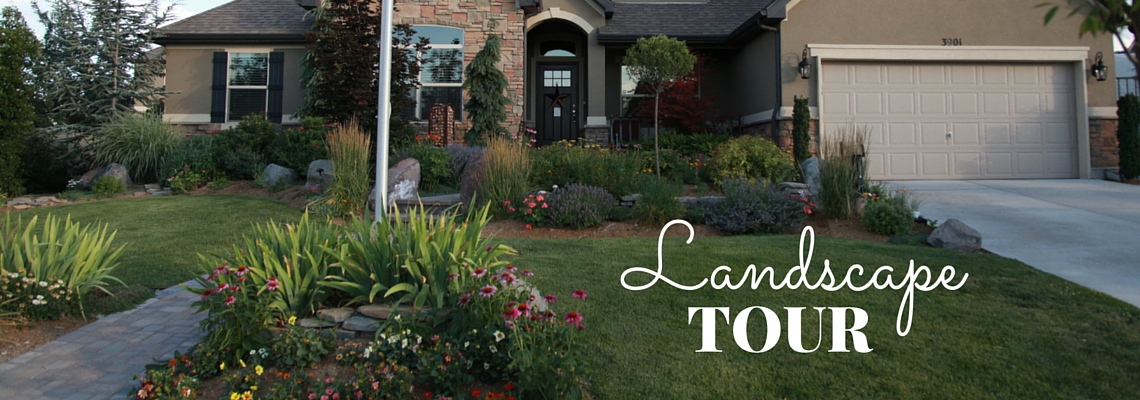
Landscape Tour Saddler
-
In response to the request of visitors to the Conservation Garden Park for an easier way to get an attractive, efficient landscape, our staff created the "Localscapes" approach to landscaping. The principles of Localscapes have been used by many design professionals over the years who simply designed this way because it works. Our staff took a closer look at the why and how it works to develop the Localscapes approach. A Localscape is a system of 5 landscape patterns/uses that make the design process simpler for everyday homeowners. The end result can be fairly open or pretty lush, it's up to you to decide what will best suit your lifestyle. However, all Localscapes are water efficient-- even if they don't LOOK that way to the eye!
The Saddler home in Salt Lake County is a perfect example of a landscape that's so lush, it's hard to believe it's water-efficient. We're familiar with their landscape as Emily has been a very active volunteer with the Conservation Garden Park, serving as the President of our former Home & Garden Club. Although Ryan is the owner of Landcraft, a local landscape construction firm, very long seasonal work hours mean that Emily is the primary caretaker of their personal residential landscape. They've generously agreed to allow us to tour their landscape and share some of their secrets to a successful yard.
The design of this landscape predates our Localscapes process but the yard was designed using the same principles. The first step in their design process was to determine their priorities then landscape accordingly. The priorities for the Saddlers were:
- High Curb Appeal
- Low-Maintenance (they are the parents of 6 young children, time is precious!)
- Activities for family
- Emphasis on home agriculture- chickens, bees and vegetable gardens
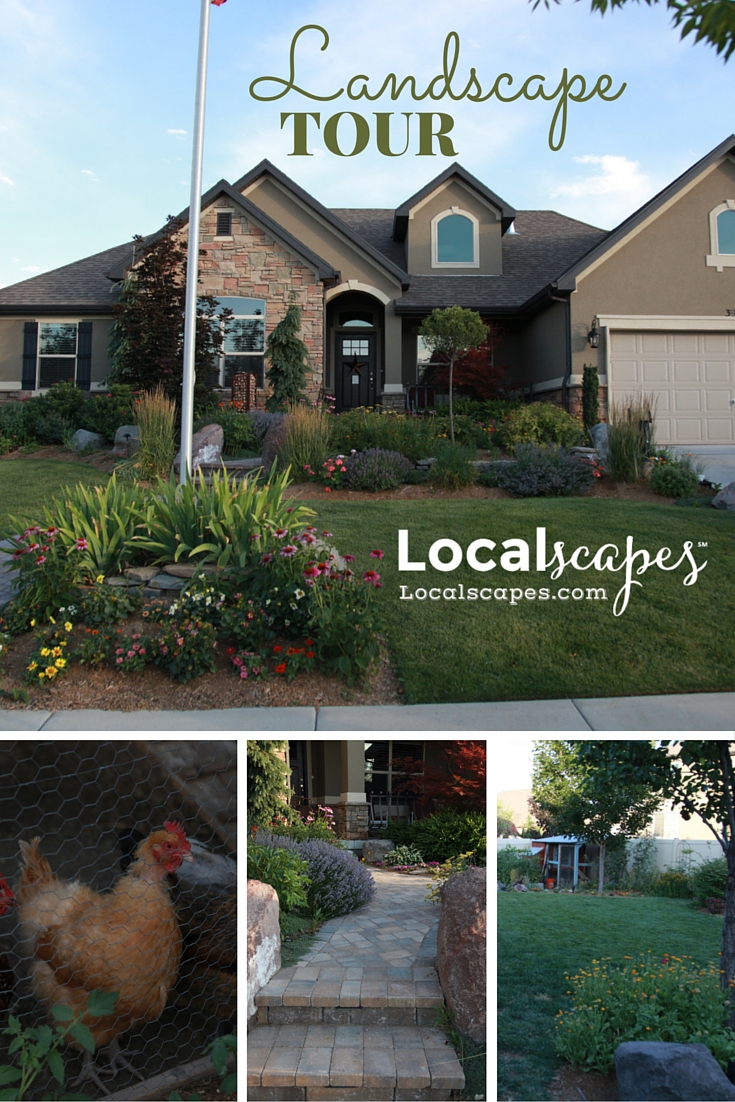
-
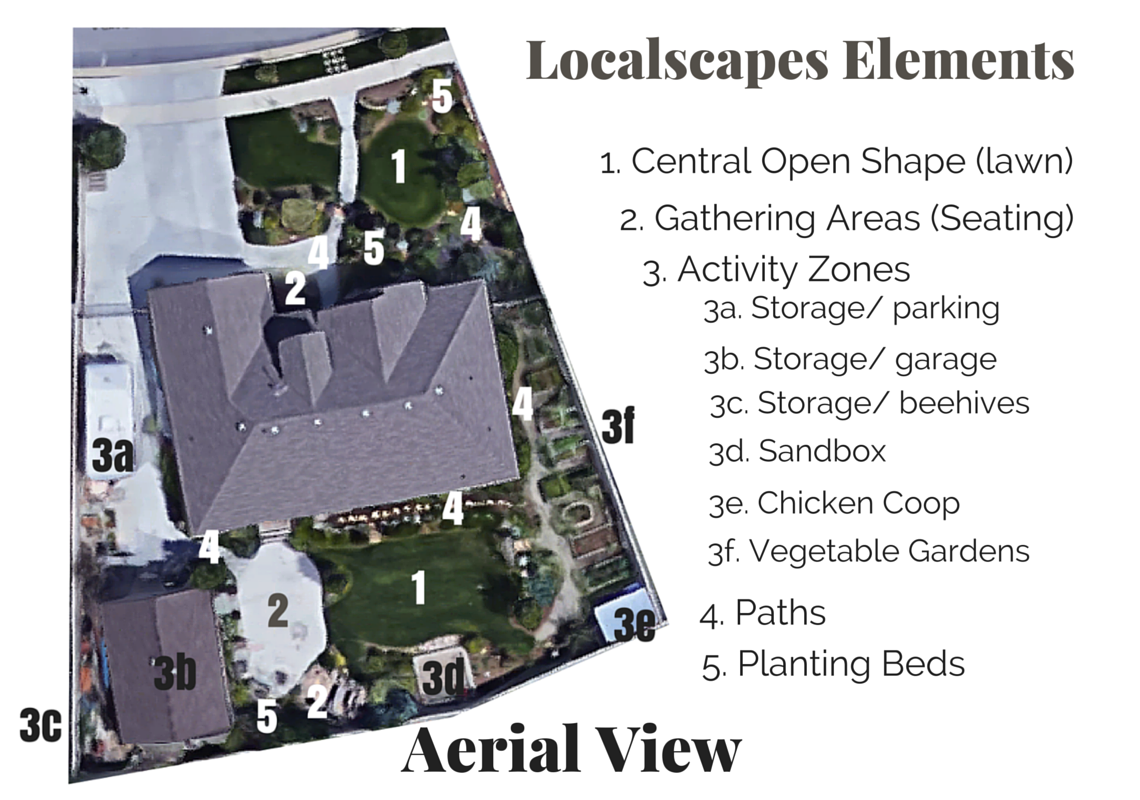
-
1. Central Open Shape
Although the total amount of lawn (by far the highest water and maintenance intensive plant in the landscape) is significantly less than a typical yard, it doesn't feel "small" when viewed as part of the whole because of the careful placement of the lawn as the central feature of the front and backyard areas. Strong edges and avoidance of obstacles in the lawn (trees, sprinkler boxes, posts etc.) make mowing quick. Keeping the lawn to one central shape also means fewer edges to maintain and less places for lawn to potentially invade flower beds.
The one element of their landscape that does not adhere to the Localscapes principles is the park strip as lawn has been used in that location. In the future, they'll likely change that out to a planted park strip but, like the rest of us, the Saddlers have limited time and budget too. -
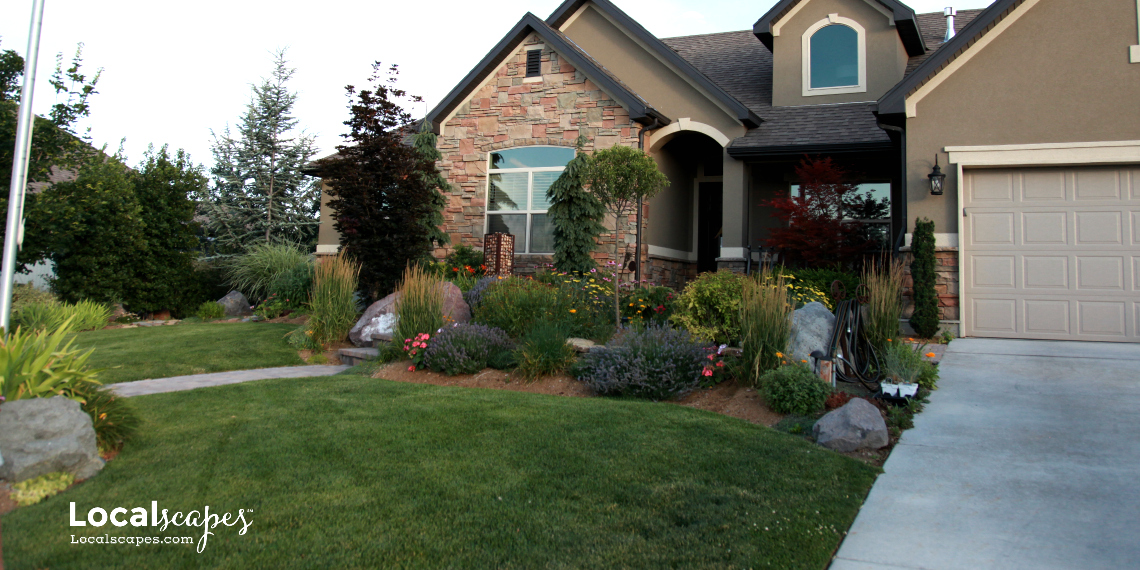
-

-
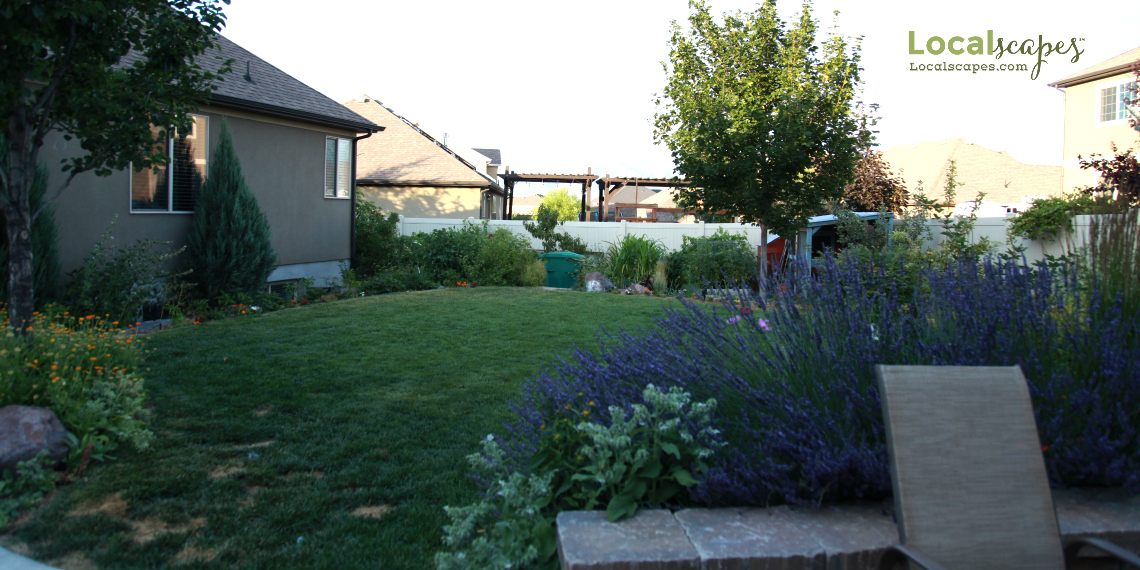
-
Above you can see the Central Open Shape as applied to the backyard. It's still a reasonable size for activities for the kids but doesn't dominate the whole yard. In fact, the lawn serves as the "white space" in this landscape, contrasting with the busier planting beds and activity zones providing a sense of order.
-
2. Gathering Spaces
The Saddlers have a couple gathering spaces on the property. In the front yard, a bench adjacent to the entry path and a seating area on the front porch welcome neighbors. In the backyard, a large open patio allows for extra seating for family gatherings while an additional seating area surrounding a fire pit provides for leisurely evenings. -
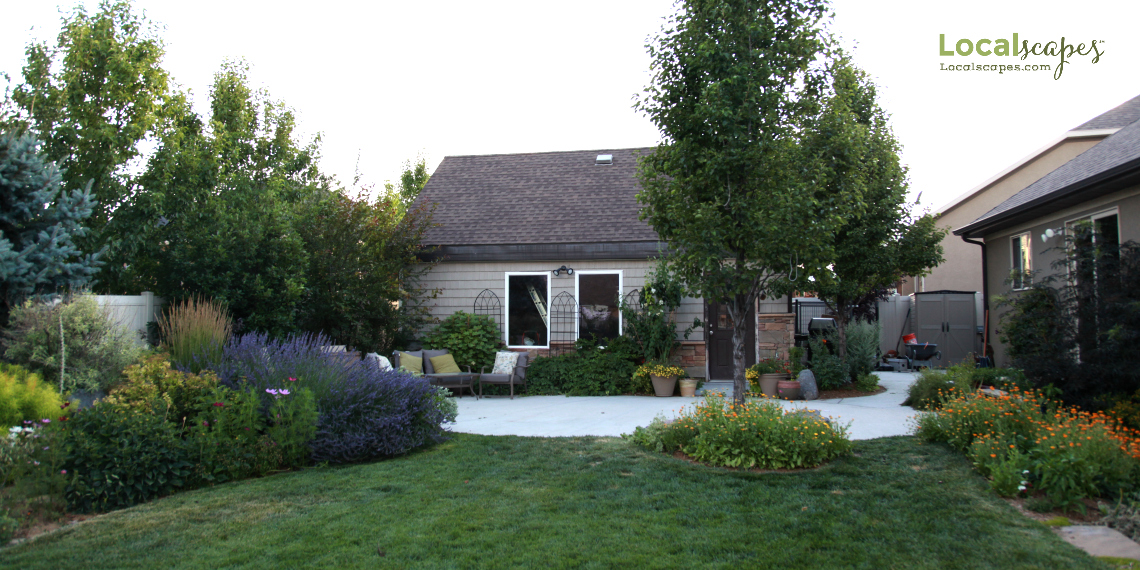
-
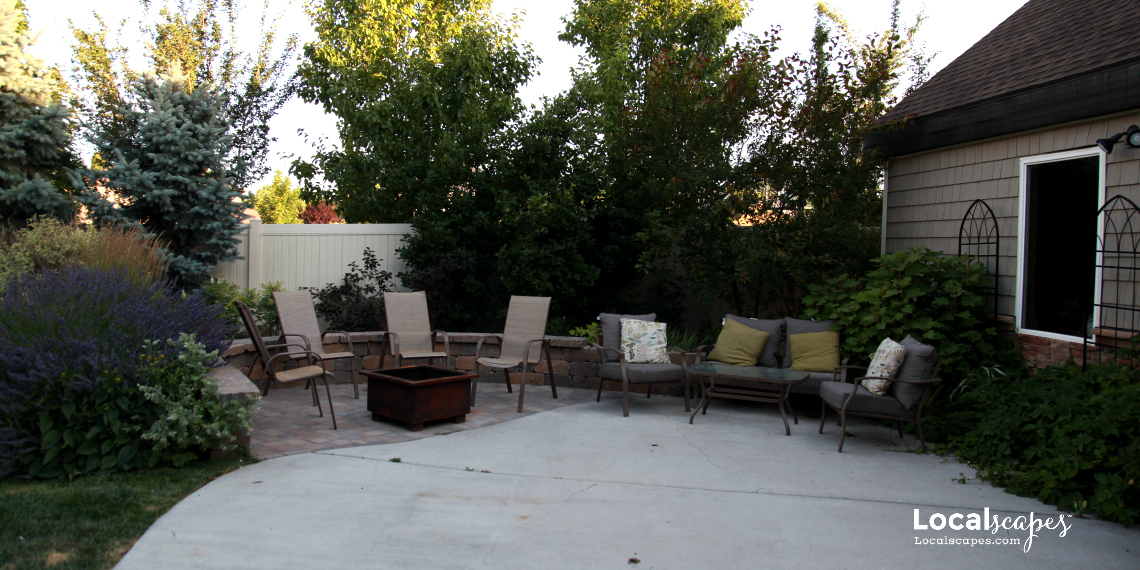
-
3. Activity Zones
This landscape is packed full of Activity Zones! Since the Saddlers have 6 young children to entertain, play spaces are important. A sandbox provides a separate play space along the rear of the property. The back patio and lawn are home to mobile yard toys that keep little hands busy.
Ryan's business requires some storage space which is housed in the separate garage and west side yard. Although Emily cringed when I said I wanted to photograph the space WITH the wheel barrow and stored items, I felt it was important to show this is a REAL yard of a real family-- and they have that less-than-glamorous stuff just like the rest of us!
Emily is committed to feeding her family a healthy local diet (so they can leave a little room for treats too.) As a result, designated areas for chickens, honeybees, and a large vegetable and herb garden are important components of their home landscape. Emily blogs about suburban agriculture and provides delicious recipes to help you eat out of your own garden too through her blog, Organic Emily. -
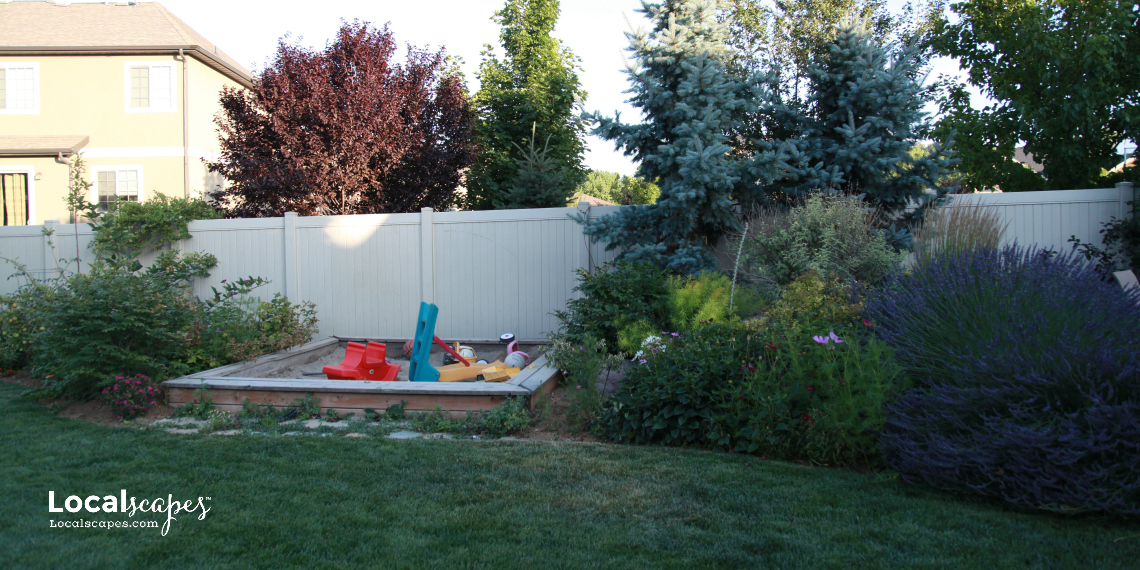
-
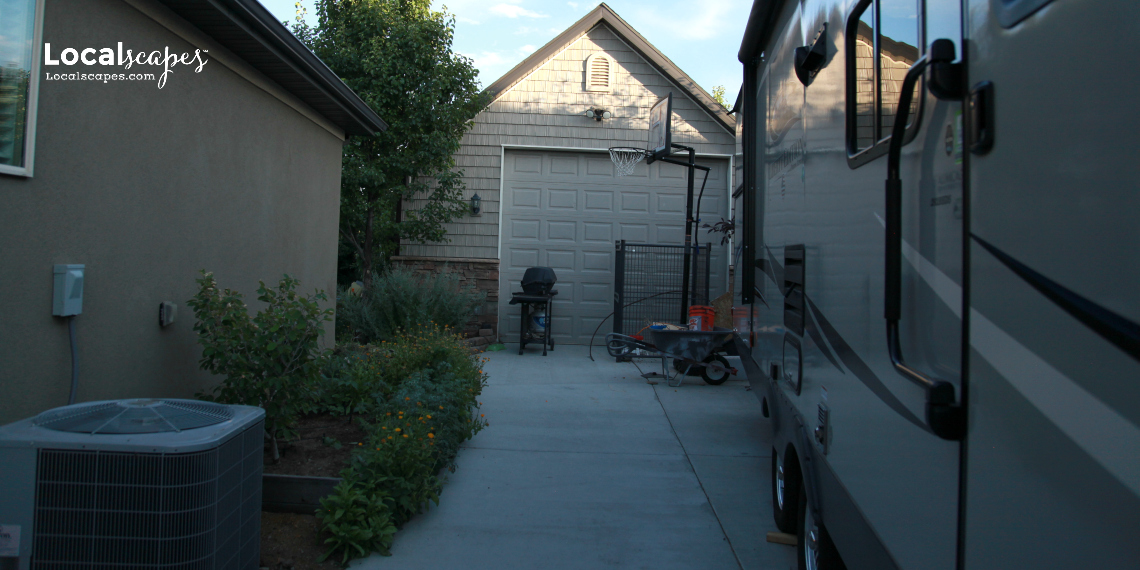
-
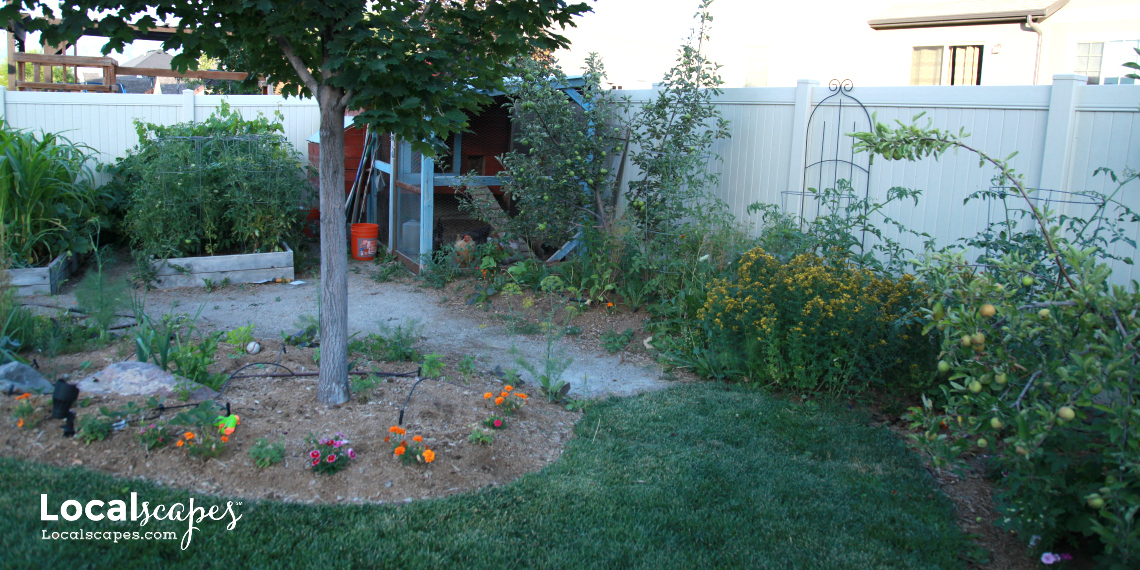
-
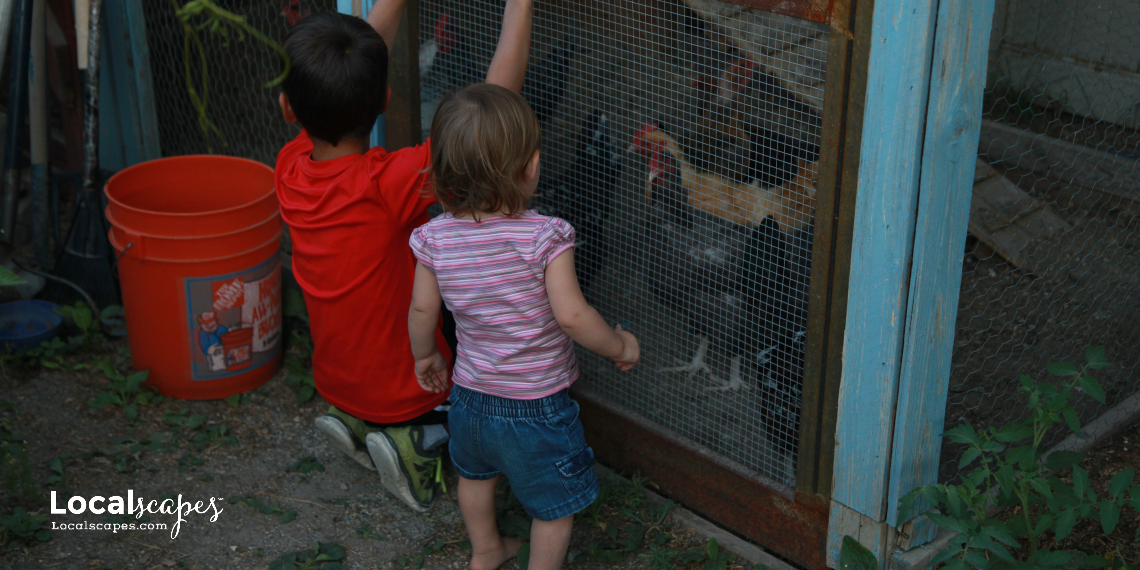
-
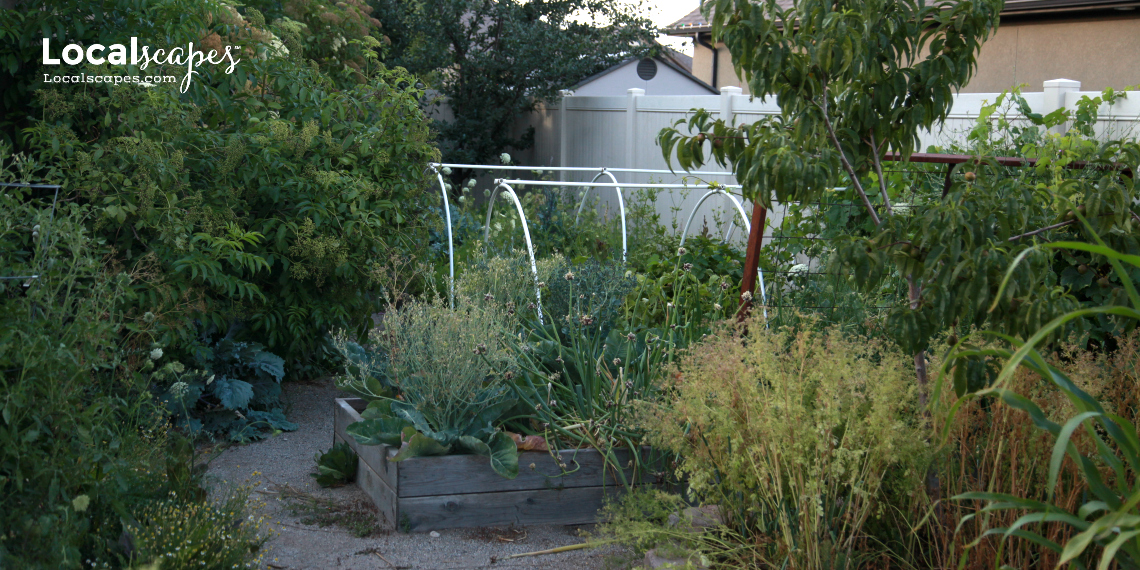
-
4. Paths
A diverse range of paths connect the various parts of the yard. Primary paths are made of concrete or landscape pavers to make snow removal easy and ensure safe passage. Seondary paths through the gardens and in planting areas are made of stepping stones. -
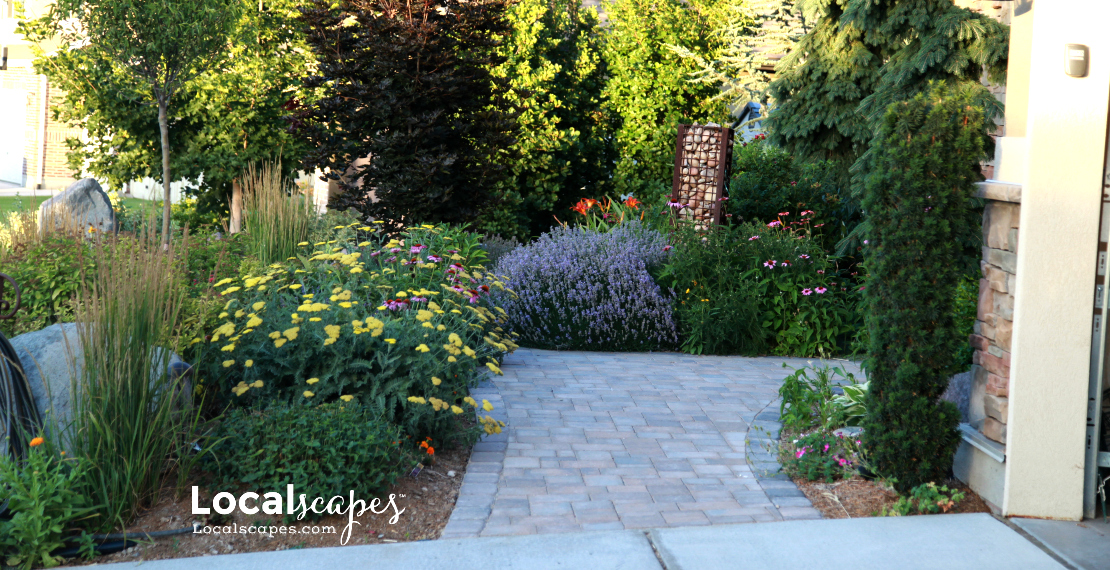
-
5. Planting Beds
Once the Saddlers filled their landscape with everything they felt they needed for their family, the remaining spaces were filled with planting beds and are watered with drip irrigation. As they're both avid gardeners, they wanted lots of colorful perennials and groundcovers.
As we chatted about her landscape, I asked Emily what people find most surprising about her yard. She quickly replied that no one believes her when she says her landscape is low-maintenance. Each spring, they apply several yards of compost to the planting beds and cut back the old perennial foliage. She makes sure to do this very early in the season (first part of March) before weeds have a chance to take hold. A combination of compost, drip irrigation and thickly planted beds keep weeds to a minimum. Since she's feeding the plants nutrients through natural compost, fewer fertilizers and chemicals are needed. In her vegetable and herb garden, no chemicals are used at all.
During the season, Emily says she pulls out a 5 gallon bucket worth of weeds about every two weeks. Early intervention and years of walking the yard and grabbing weeds that sprout before they go to seed has reduced the total amount of weed seed in her landscape. She says that if you're timely with your maintenance, you'll do much less of it. Even just 10-15 minutes of pulling weeds every other day can maintain a healthy landscape, so long as you've gotten it to a healthy state in the first place.
-

-

-


